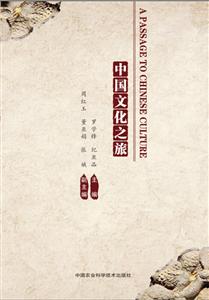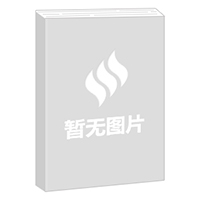-
>
兩種文化之爭 戰后英國的科學、文學與文化政治
-
>
東方守藝人:在時間之外(簽名本)
-
>
易經
-
>
辛亥革命史叢刊:第12輯
-
>
(精)唐風拂檻:織物與時尚的審美游戲(花口本)
-
>
日本禪
-
>
日本墨繪
中國文化之旅 版權信息
- ISBN:9787511635730
- 條形碼:9787511635730 ; 978-7-5116-3573-0
- 裝幀:一般膠版紙
- 冊數:暫無
- 重量:暫無
- 所屬分類:>
中國文化之旅 內容簡介
全冊共計分為地理、飲食、節假日、歷史四個部分計19單元,每個單元結構如下:**部分主要是地理部分,講述中國地理中的自然文化、風景以及美學意義,激發學生對祖國大好河山的自豪感以及如何講好祖國山水的基本能力。第二部分主要是中國美食文化簡介。通過具有中國特色的美食文化展示,凸顯具有地方特色、民族特色的飲食文化,更好的講述中國的悠久歷史文化內涵。更好的向世人展示中國。民以食為天。第三部分主要是中國傳統文化中的新年。中國傳統文化中的新年對于整個世界的影響以及傳達的民族文化內涵。進一步闡釋5000年連續的文明背后的原因。第四部分是中國歷史文化部分,講好中國的故事是關鍵,中國的故事中的歷史文化秉承整個民族文化,是民族文化的脊梁。從尋根問祖、絲綢之路、大唐盛世、兩宋文化科技、大明王朝航海時代、以及大清帝國、新中國的成立,一步步走向輝煌的歷史,客觀、真實的詮釋了整個民族的歷史文化,在興衰的進程中見證了輝煌的過去以及展望民族復興的未來。在教材編寫過程中,我們得到了許多同仁的大力支持以及建議,再次表示感謝。由于編寫組成員知識水平有限以及對材料的理解度和感知力不同,因此存在的問題以及錯誤在所難免,希望讀者予以指正。
中國文化之旅 目錄
中國文化之旅 節選
Part IGeography Part I Geography Chapter OneHeart of the Dragon 1.1The last hidden world——China For centuries,travelers to China have told tales of magical landscapes and surprising creatures.Chinese civilization is the worlds oldest and today——its largest,with well over a 1.3 billion people.It is home to more than 50 distinct ethnic groups and a wide range of traditional lifestyles,often in close partnership with nature. We know that China faces immense social and environmental problems.But there is great beauty here,too. China is home to the worlds highest mountains,vast deserts ranging from searingsearing:熾熱的 hot to mindnumbingmindnumbing:令人頭腦麻木的 cold,steaming forests harboring rare creatures,grassy plains beneath vast horizons,and rich tropical seas. Now for the first time ever,we can explore the whole of this great country,meet some of the surprising and exotic creatures that live here and consider the relationship of the people and wild life of China to the remarkable landscape in which they live. This is wild China. 1.2Rice and swallow in the warm subtropical south of China Our exploration of China begins in the warm,subtropical south.On the Li Riverthe Li River:里河(古文明發源地之一)漓江,fishermen and birds perch on bamboo rafts,a partnership that goes back more than a thousand years.This scenery is known throughout the world,a recurring motifmotif:主題 in Chinese paintings and a major tourist attraction. The south of China is a vast area,eight times larger than the UK.Its a landscape of hills but also of water.It rains here for up to 250 days a year,and standing water is everywhere.In the floodplain of the Yangtze River,blacktailed godwitsgodwit:黑尾鷸(一種鳥) probe the mud in search of worms.But isnt just wildlife that thrives in this environment. The swampy ground provides ideal conditions for a remarkable member of the grass family——Rice.The Chinese have been cultivating rice for at least 8,000 years.It has transformed the landscape. Late winter in southern Yunnan is a busy time for local farmers as they prepare theageold paddy fields ready for the coming spring.These hill slopes of the Yuanyang County plunge nearly 2000 meters to the floor of the Red River valley.Each contains literally thousands of stacked terracesterrace:臺地 carved out by hand using basic digging tools.Yunnans rice terraces are among the oldest human structures in China,still ploughed,as they always have been,by domesticated water buffaloes,whose ancestors originated in these very valleys. This manmade landscape is one of the most amazing engineering featsfeat:功績 of preindustrial China.It seems as if every square inch of land has been pressed into cultivation.As evening approaches,an ageold ritual unfolds. Its the mating season and male paddy frogs are competing for the attention of the females.But it doesnt always pay to draw too much attention to yourself.The Chinese pond heronheron:鷺 is a pitiless predatorpredator:捕食其他動物的動物.Even in the middle of a ploughed paddy field,nature is red in beak and claw.This may look like a slaughter but as each heron can swallow only one frog at a time,the vast majority will escape to croak another day. Terraced paddies like those of the Yuanyang County are found across much of southern China.This whole vast landscape is dominated by rice cultivation.In hilly Guizhou Province,the Miao minority have developed a remarkable rice culture.With every inch of fertile land given over to rice cultivation,the Miao build their wooden houses on the steepest and least productive hillsides.In Chinese rural life,everything has a use.Dried in the sun,manure from the cow sheds will be used as cooking fuel. Its midday.And the Song family are tuckingtuck:吃,喝 into a lunch of rice and vegetables.Obliviousoblivious:不注意的 to the domestic chitchat,Granddad Guyong Song has serious matters on his mind.Spring is the start of the rice growing season. The success of the crop determine how well the family will eat next year,so planting at the right time is critical.The ideal date depends on what the weather will do this year,never easy to predict.But there is some surprising help at hand. On the ceiling of the Songs living room,a pair of redrumpedredrumped:紅尾巴的 swallows,newly arrived from their winter migration,is busy fixing up last years nest.In China,animals are valued as much for their symbolic meaning as for any good they may do. Miao people believe that swallow pairs remain faithful for life,so their presence is a favour and a blessing,bringing happiness to a marriage and good luck to a home.Like most Miao dwellings,the Songs living room windows look out over the paddy fields.From early spring,one of these windows is always left open to let the swallows come and go freely.Each year,granddad Gu notes the exact day the swallows return.Miao people believe the birds arrival predicts the timing of the season ahead.This year,they were late.So Gu and the other community elders have agreed that rice planting should be delayed accordingly. As the Miao prepare their fields for planting,the swallows collect mud to repair their nests and chase after insects across the newly ploughed paddies.Finally,after weeks of preparation,the ordainedordained:判定的 time for planting has arrived.But first the seedlings must be uprooted from the nursery beds and bundled up ready to be transported to their new paddy higher up the hillside.All the Songs neighbors have turned out to help with the transplanting.Its how the community has always worked.When the time comes,the Songs will return the favor. While the farmers are busy in the fields,the swallows fly back and forth with material for their nest.
- >
月亮與六便士
- >
詩經-先民的歌唱
- >
隨園食單
- >
推拿
- >
回憶愛瑪儂
- >
李白與唐代文化
- >
莉莉和章魚
- >
名家帶你讀魯迅:故事新編

















